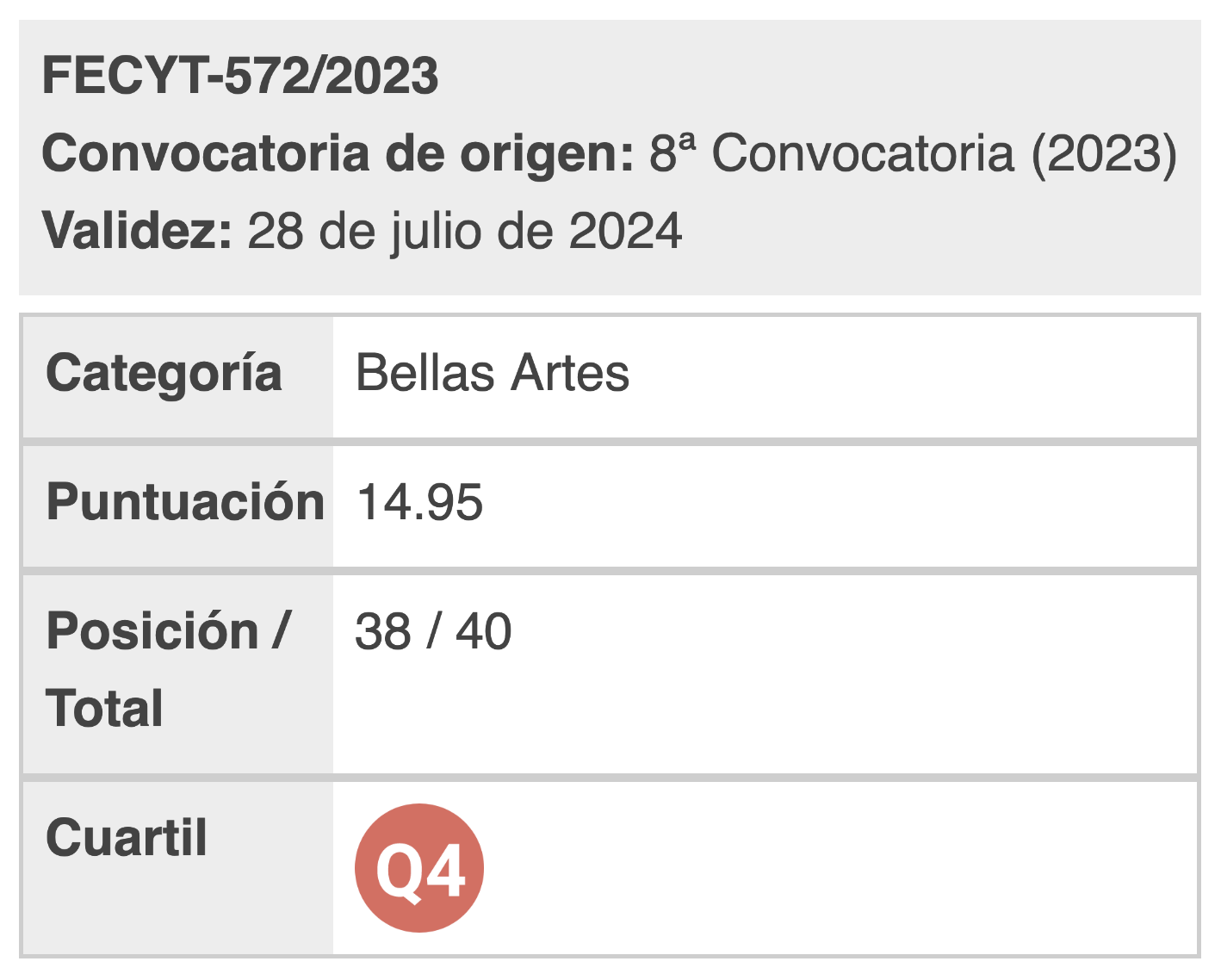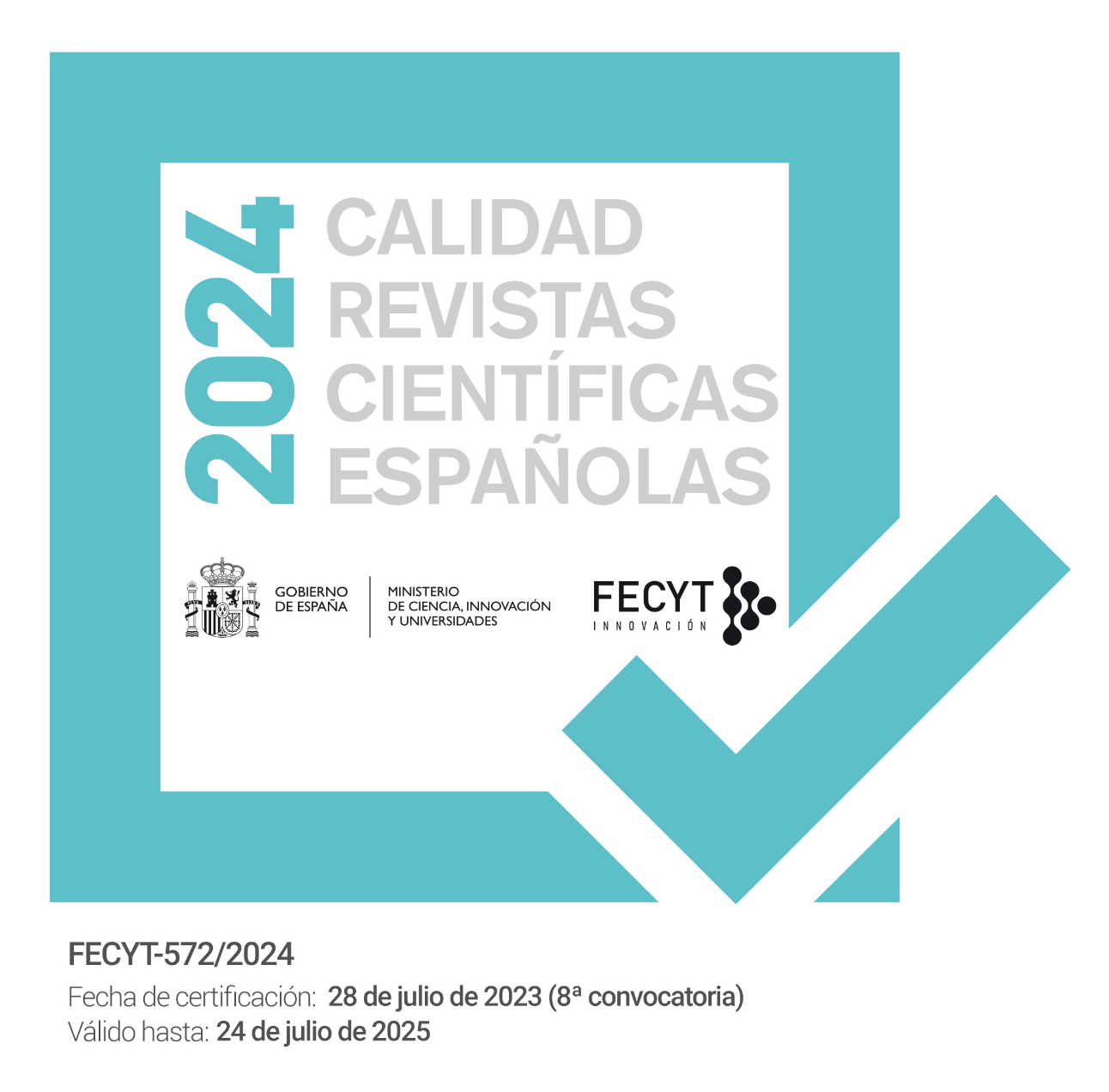Body, Mask and biopolitics. Opacity strategies in the Big Data era.
DOI:
https://doi.org/10.5281/zenodo.7655999Keywords:
Biometry, digital panopticon, Opcity, Mask, Facial recognitionAbstract
The measurement and standardization of bodies has become, in the era of Big Data, a central mechanism of surveillance and biopolitical control. In some contemporary artistic practices that think about the technology-identity intersection, we find discourses on different strategies of resistance to this digital panopticon, which are often articulated around the complexity of the exhibition/concealment binomial.
References
Altun, B. (2010) Una historia moral del rostro. Pre-Textos.
Benson, E. (2014) The Biopolitics of the Border. RCC Perspectives, (1), 81-86.
Blas, Zach. (2013) Escaping the Face: Biometric Facial Recognition and the Facial Weaponization Suite. Media-N, Journal of the New Media Caucus, (9). Recuperado de http://median.newmediacaucus.org/caa-conference-edition-2013/escaping-the-face-biometric-facial-recognition-and-the-facial-weaponization-suite/
Cohen, S. y Taylor, L. (1992) Scape Attempts. The Theory and Practice of Resistence to Everyday Life. Routledge.
Colombani, M. C. (2008) Foucault y lo político, Buenos Aires. Universidad Nacional de La Plata & Prometeo Libros.
Crispin, S. (2919) Data-Masks Biometric Surveillance Masks Evolving in the Gaze of the Technological. Recuperado de http://www.sterlingcrispin.com/Sterling_Crispin_Data-masks_MS_Thesis.pdf, p. V.
Dunlap, Jr. y Charles, J. (2014) The Hyper-Personalization of War: Cyber, Big Data, and the Changing Face of Conflict. Georgetown Journal of International Affairs, (IV), 108-118.
Fenney, M. (2016) Surveillance Takes Wing. Privacy in the Age of Police Drones. Policy Analysis, 804-824.
Foucault, M. (2009) Nacimiento de la biopolítica. Akal.
_____________ . (2000) Vigilar y Castigar. Nacimiento de la prisión. Editorial Siglo XXI.
Grimes, R. L. (1975) Masking: Toward a Phenomenology of Exteriorization. Journal of the American Academy of Religion, 43 (3), 1975, 508-516.
Haraway, D. (1985) Manifesto for Cyborgs: Science, Technology, and Socialist Feminism in the 1980s. Socialist Review, (80), 65-108.
Harvey, A. (2019) Hyperface. Recuperado de https://ahprojects.com/projects/hyperface/
Lacombe, D. (1996) Reforming Foucault: A Critique of the Social Control Thesis. The British Journal of Sociology, 47 (2), 332-352.
Magnet, S. A. (2011) When Biometrics Fail: Gender, Race, and the Technology of Identity. Durham, Reino Unido: Duke University Press.
Nail, T. (2016) Biopower and Control. En N. Morar. (Ed.), Between Deleuze and Foucault. (pp. 247-263). Edinburgh, Reino Unido: Edinburgh University Press.
Paul, C. (2015) From Immateriality to Neomateriality: Art and the Conditions of Digital Materiality. Conferencia presentada en ISEA 2015 – 21st International Symposium on Electronic Art, Vancouver, Canadá.
Sluis, K. (2019) Artist profile: Zach Blas. Rhizome. Recuperado de https://rhizome.org/editorial/2017/mar/01/artist-profile-zach-blas/

Published
How to Cite
Issue
Section
License

This work is licensed under a Creative Commons Attribution 4.0 International License.
You are free to:
Share — copy and redistribute the material in any medium or format.
Adapt — remix, transform, and build on the material for any purpose, including commercial.
Attribution — You must properly acknowledge the authorship, provide a link to the license, and indicate if any changes have been made.
You may do so in any reasonable manner, but not in any way that suggests that you endorse or receive any endorsement by the licensor for your use.
No additional restrictions — You may not apply legal terms or technological measures that legally restrict you from doing what the license allows.



























